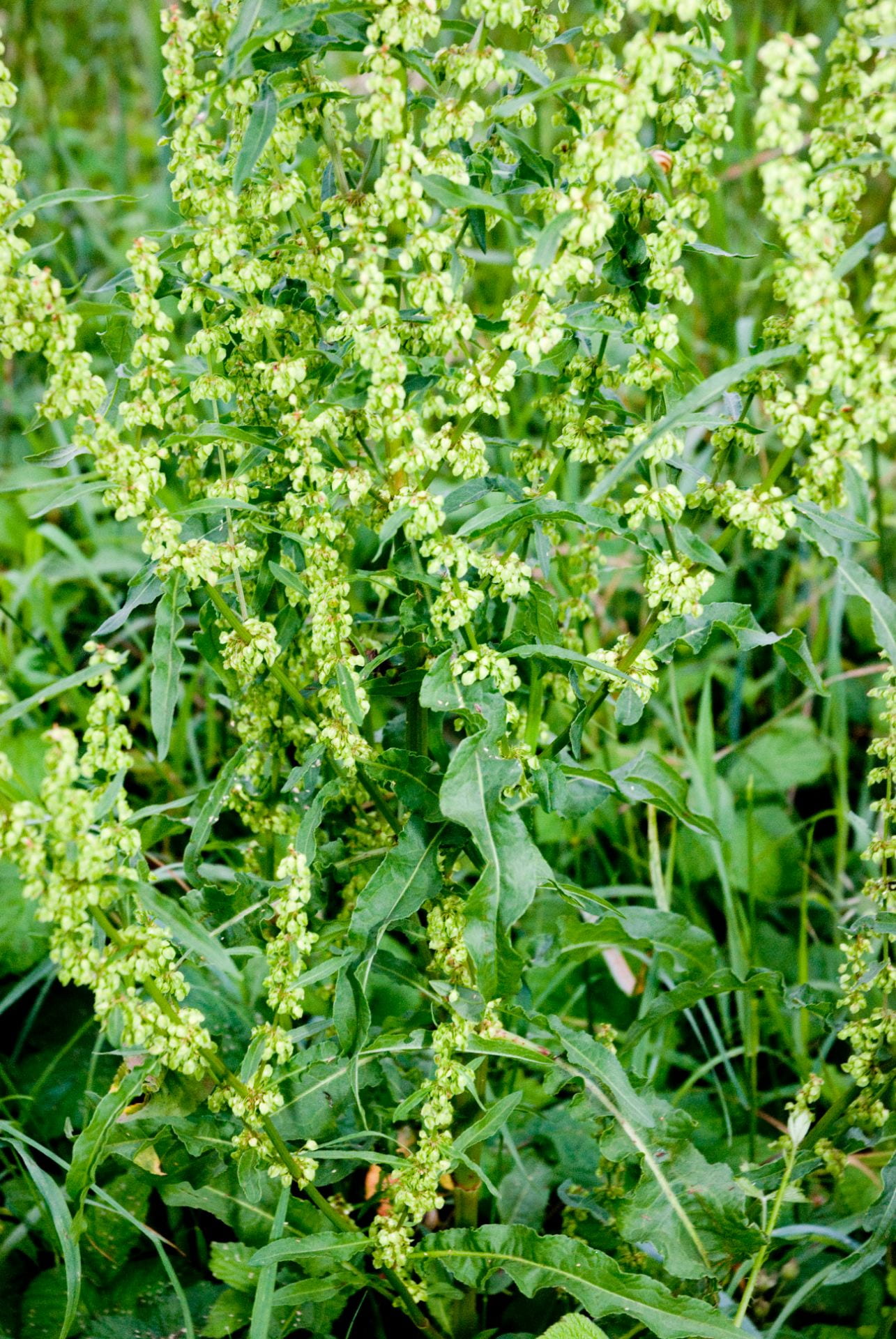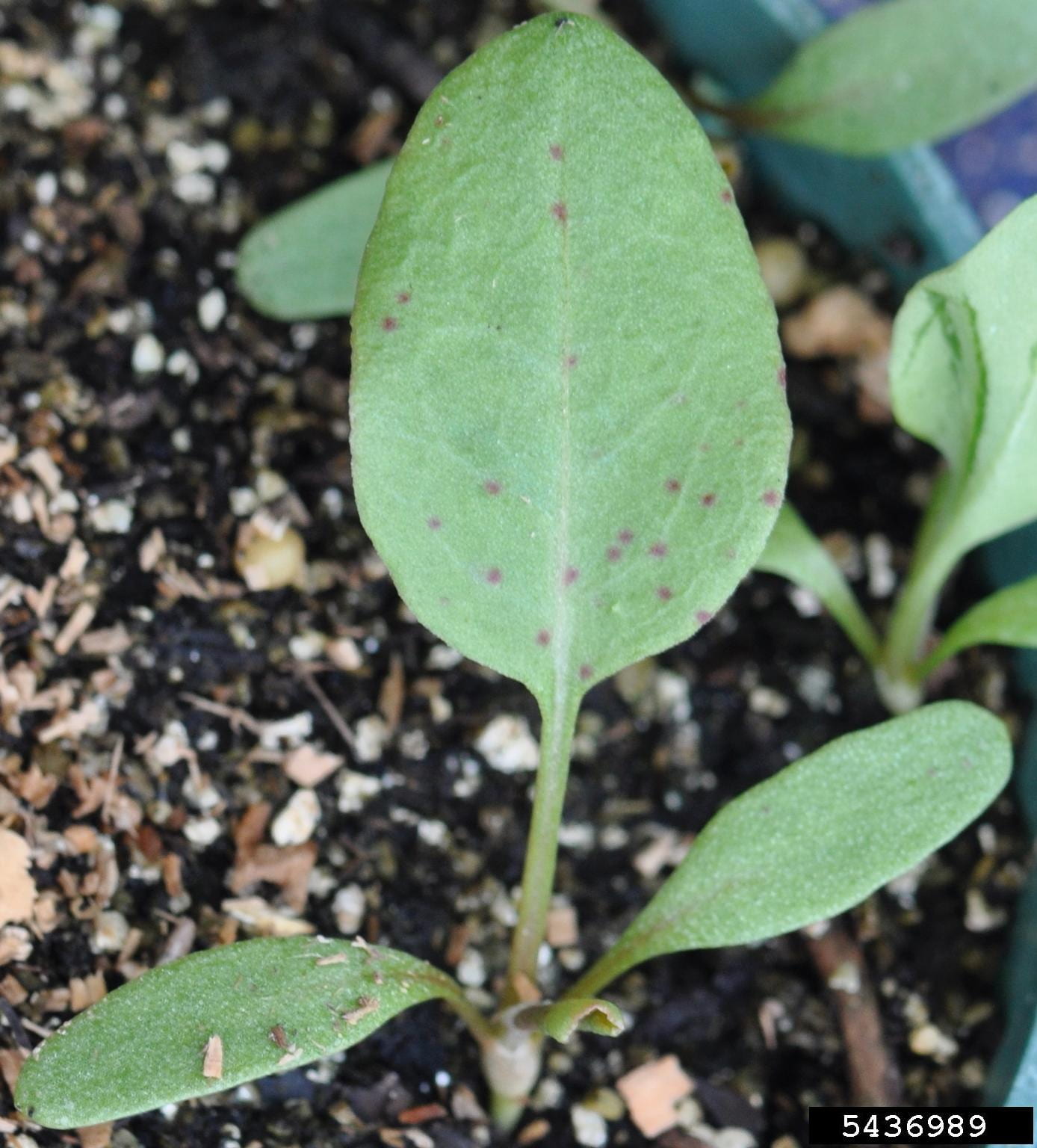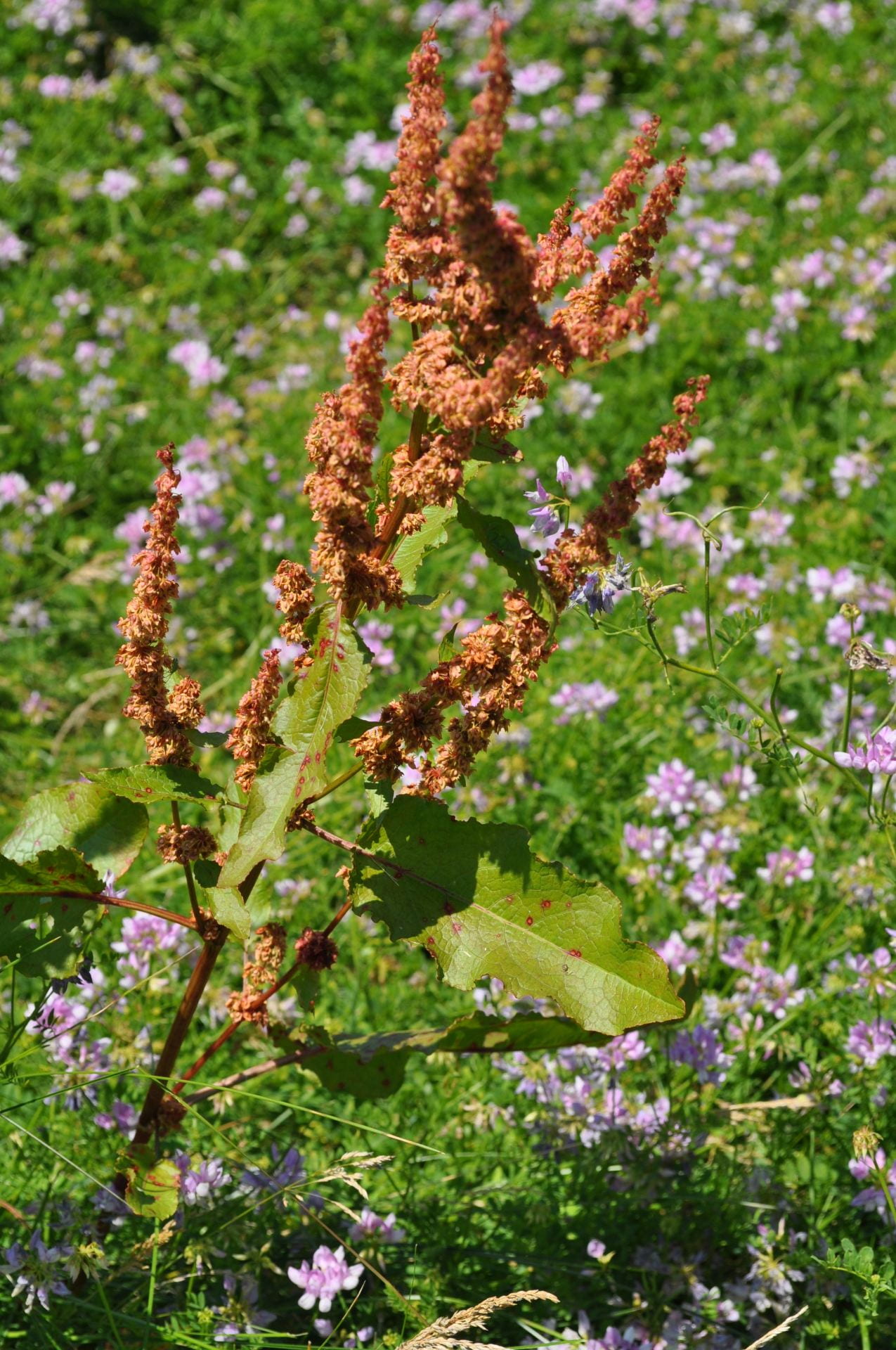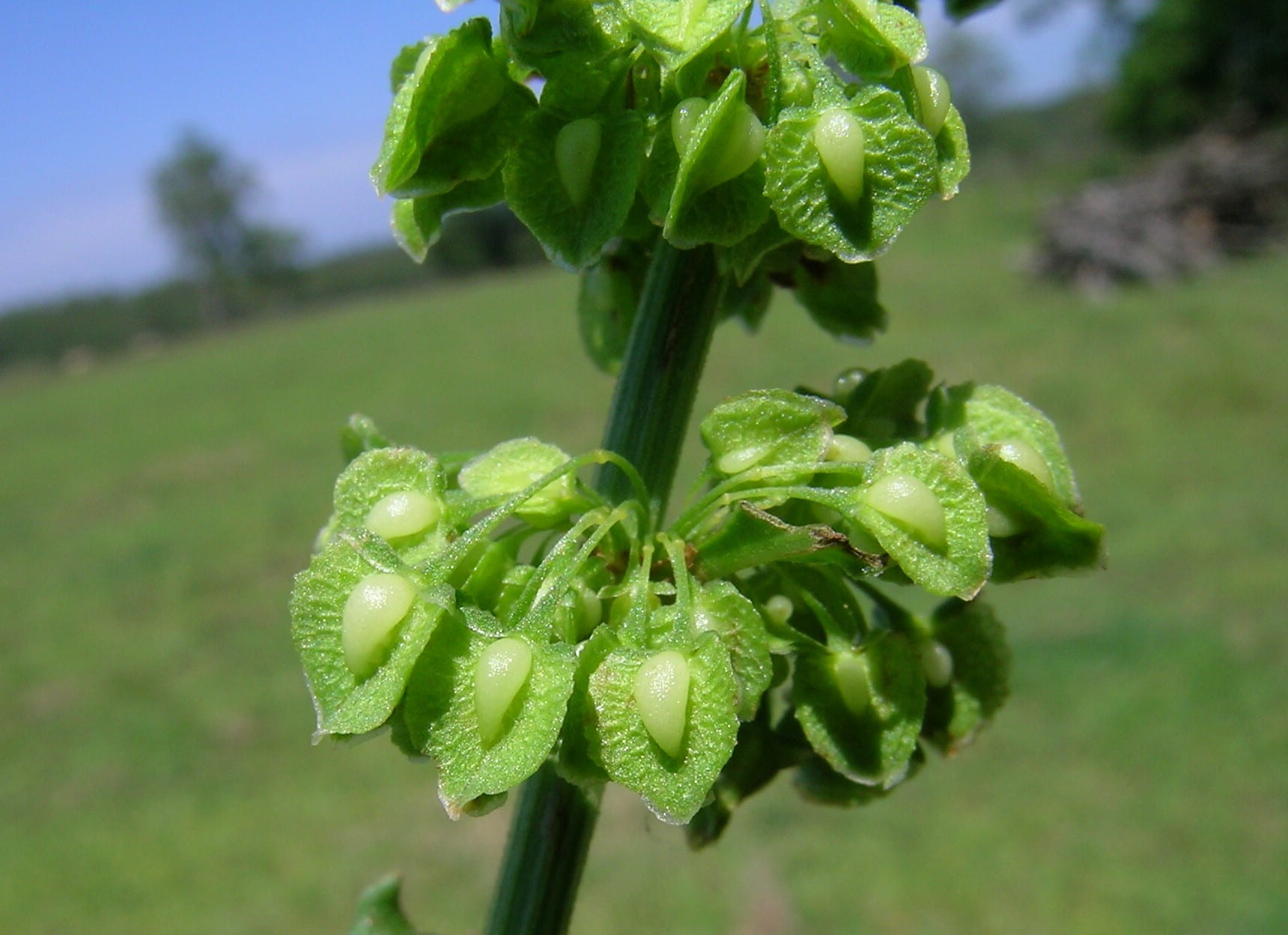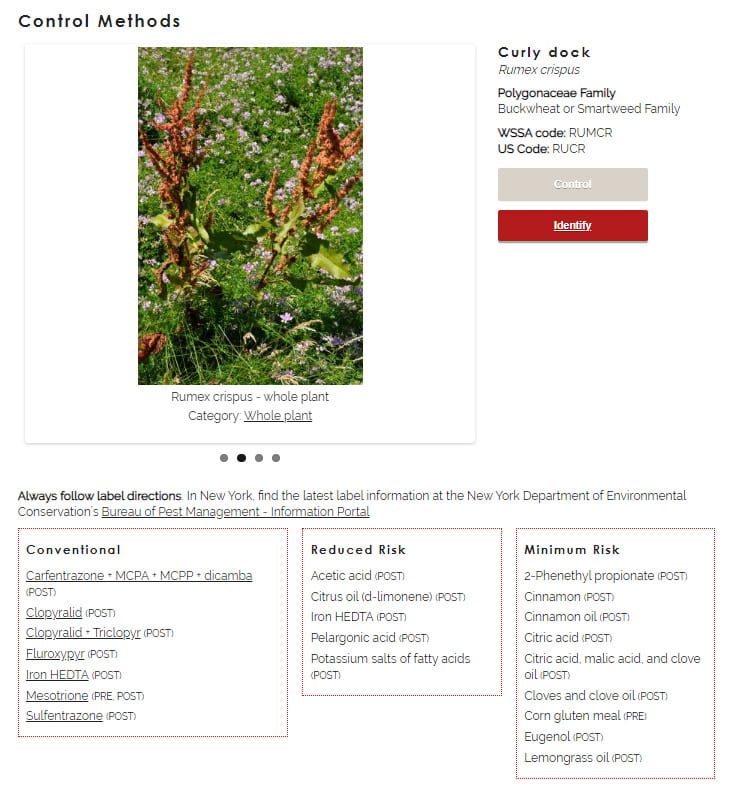Curly dock (Rumex crispus L.) is a weed of low-maintenance orchards, nursery crops, landscapes, roadsides, pastures and forage crops. This perennial plant is not usually a problem in cultivated row crops. Curly dock grows throughout the US and southern Canada.
Identification
Emergence: Curly dock seeds germinate in cool, moist soil from late spring through early fall as conditions permit. Established plants emerge from the taproot in midspring, producing a robust rosette.
Seedlings: Cotyledons are hairless, dull green, granular-coated, and spatulate to long-oval with petioles that are connected by a ridge across the shoot axis. Young leaves are in a basal rosette, smooth, egg-shaped, with red spots on the upper surface. Oder leaves have slightly wavy margins. An ocrea surrounds the stem at the base of the petiole. Emerging leaf margins are rolled underneath the blade.
Leaves: Leaves are shiny, progressively becoming more reddish purple through the season. Lower leaves are longer and more rounded than the stem leaves. Stem leaves are alternate, subtended by an ocrea, and reduced in both number and size compared with basal leaves.
Mature plant: Emerging perennials produce a robust basal rosette of 15 – 30 cm long leaves with wavy margins. Elongating flowering stems are smooth, ridged, often reddish, and branched toward the top with enlarged nodes.
Flowers/Fruit: Plants flowers primarily in June, but also throughout the summer. Flowers are in clusters (15 -60 cm long) on narrowly spaced branches on the upper portions of the elongating stem. Flowers have greenish sepals that become reddish brown at maturity. The seed is enclosed within the fruit, a papery or corky 3-winged triangular structure. Seeds are triangular, glossy, and reddish brown at maturity. Corky structures on the outside of the calyx allow the fruit to float on water, thus facilitating dispersal. A single plant can produce 40,000 seeds.
Management
Uprooting plants, chopping and then burying the taproots will control curly dock. Mowing will prevent seed production and reduce top growth. Spring application of labeled herbicides are effective in controlling seedling curly dock. For established curly dock plants, fall herbicide applications are the most effective. Sequential applications may be necessary for control.
Chemical control
Cornell University’s Turf and Landscape weed identification app provides recommendations for chemical management of curly dock.
Use this tool to look up the efficacy of herbicides on a particular weed species. For general guidance on weed control, get the latest edition of the Cornell Crop and Pest Management Guidelines.
Non-chemical control
Non-chemical control: Michigan State University has a detailed profile of non-chemical management for curly dock. They suggest chopping the plant a couple inches below ground, or any cultivation practice that will chop and bury the plant’s taproot.
See A Grower’s Guide to Organic Apples from Cornell for non-chemical weed control options in apple orchards.
References
Uva R H, Neal J C, DiTomaso J M. 1997. Weeds of the Northeast. Book published by Cornell University, Ithaca NY. The go-to for weed ID in the Northeast; look for a new edition sometime in 2019.
Michigan State University has a detailed profile of non-chemical management for curly dock.
Cornell University’s Turfgrass and Landscape Weed ID app. Identification and control options for weeds common to turf, agriculture, and gardens in New York; uses a very simple decision tree to identify your weed.
Peck, G M and I A Merwin. A Grower’s Guide to Organic Apples. Covers organic weed control methods for organic apple orchards.
Breth, D I and E Tee. 2016. Herbicide AI by Weed Species. This tool allows you to look up the efficacy of an herbicide active ingredient on a particular weed species.

